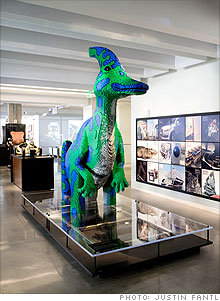According to a story in last week's NY Times, it is the credit crunch, an inability to borrow money, that is bringing many major construction projects to a halt. But even without going anywhere near the billions in its endowment, AAA-rated Harvard has no problem raising money and has raised billions of dollars by selling bonds at interest rates between 3 and 6 percent.
Harvard has the money (or can borrow it at pretty attractive rates). Harvard has plenty of land in Allston and Brighton waiting to be put to better use. And according to PPS, "placemaking generates a big return on investment"
"Paying attention to the simple principles of Placemaking can leverage millions of private dollars in return at the same time as sparking retail vitality and attracting new residents and business."In an overlooked part of Houston, PPS was part of a project that:
A smaller project in Detroit transformed"transformed 12 acres of underused green space and parking lots near the convention center into an urban oasis...A new restaurant built right in the park, The Grove, is doing far better than its preliminary estimates...Widespread worries that people would not come to the park, which is located in what was until now an out-of-the-way part of downtown, have disappeared."
"a 1.6 acre concrete island that sat unused in a sea of auto traffic... melting widespread cynicism that downtown Detroit was a lost cause. Since it opened, 2.24 million square feet of new or renovated retail and office space has opened or is under construction on lots fronting Campus Martius. More than $450 million in new investments has already gone into the area, with other multimillion dollar projects still underway. Ground floor retail space has greatly increased and approximately 300 new condos and apartments are planned."
So improving Barry's Corner, western portions of Western Ave, and the Holton St Corridor shouldn't cost Harvard anything. To the contrary, if PPS can be believed, Harvard should be able to make a nice return on its investment, help the Boston economy, make Allston more attractive to the Harvard people who will work in the Science Complex a few years from now, and be a good neighbor to its Allston/Brighton neighbors who look forward to the "urban village" envisioned and endorsed by Harvard in the North Allston Strategic Framework.

























